-

Cooling cows efficiently with water spray
Dairies use intermittent sprinkler systems to cool cows in warm weather, but little experimental work has been done to determine how much water is needed to achieve beneficial effects. A group of dairy scientists conducted a study at the University of California, Davis, to examine the effects of ...Read more -
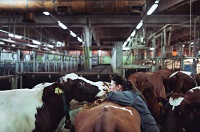
Cows in glass tanks help to reduce methane emissions
In the future, the breeding of the climate-friendly cow can be speeded up by using genetic information. A recent study identifies areas in the cow’s genotype which are linked to the amount of methane it produces. Cows subjected to study did not unnecessarily chew their cuds when being place...Read more -

Consumption of natural estrogens in cow’s milk does not affect blood levels or reproductive health
Estrogen occurs naturally in cow’s milk. Recently, there has been concern that consuming milk containing elevated amounts of estrogen could affect blood levels of the hormone in humans, leading to an increased risk of some cancers. A new study published in the Journal of Dairy Science® inve...Read more -
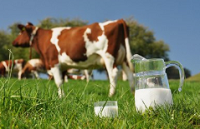
Consumers sour on milk exposed to LED light
Got LED light? Display cases and grocery stores increasingly do, and that’s bad news for milk drinkers. Cornell University researchers in the Department of Food Science found that exposure to light-emitting diode (LED) sources for even a few hours degrades the perceived quality of fluid mil...Read more -

Computers learn to spot deadly bacteria
Machine learning can predict strains of bacteria likely to cause food poisoning outbreaks, research has found. The study — which focused on harmful strains of E. coli bacteria — could help public health officials to target interventions and reduce risk to human health. Researchers at ...Read more -

Climate change may hurt animals’ ability to live on toxic plants
University of Utah lab experiments found that when temperatures get warmer, woodrats suffer a reduced ability to live on their normal diet of toxic creosote – suggesting that global warming may hurt plant-eating animals. “This study adds to our understanding of how climate change may ...Read more -

Cancer-causing virus strikes genetically vulnerable horses
Sarcoid skin tumors are the most common form of cancer in horses, but little is known about why the papillomavirus behind them strikes some horses and not others. A new study by an international research group led by scientists at the Baker Institute for Animal Health at Cornell’s College o...Read more -
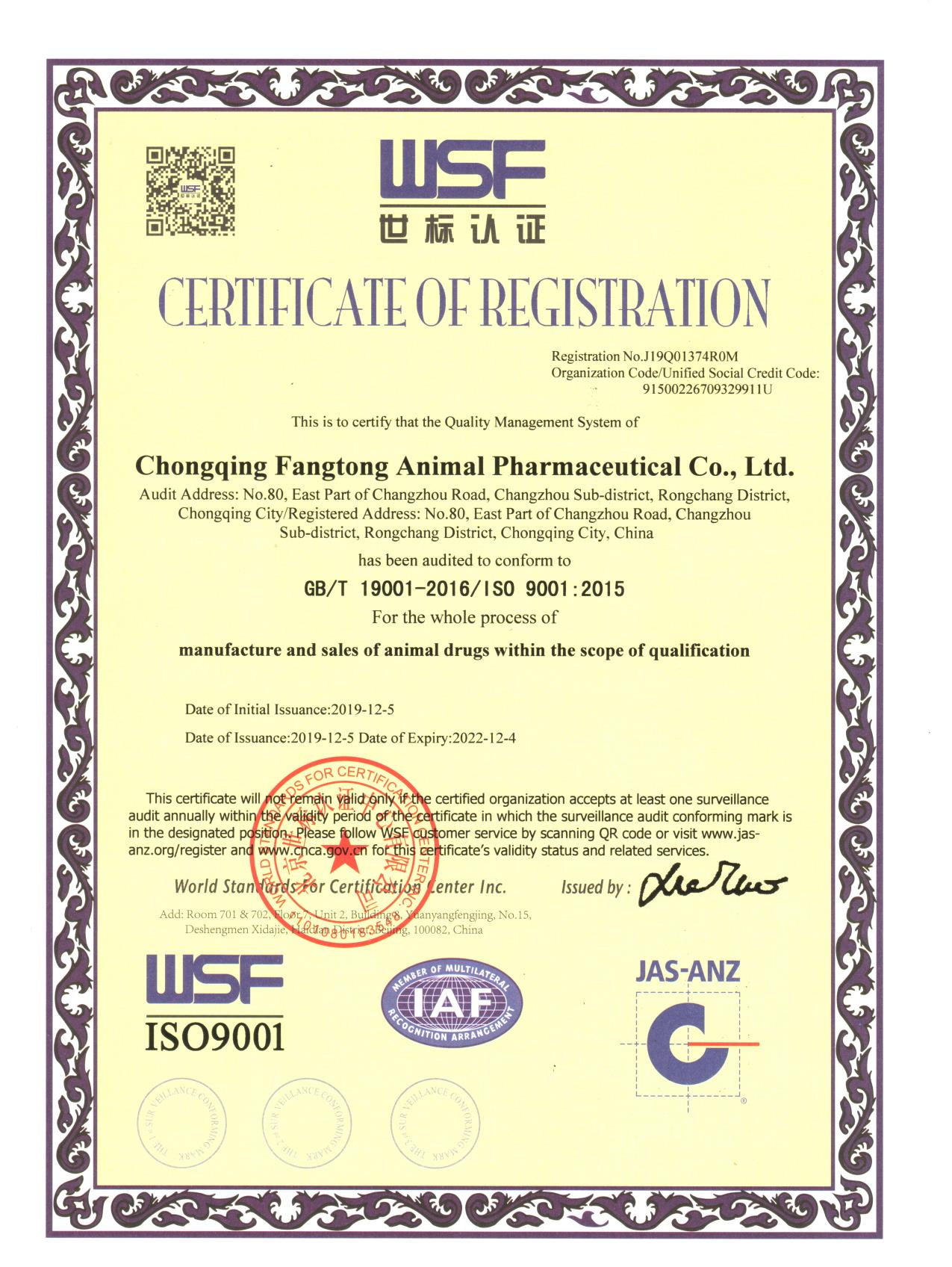
Congratulations! Fangtong Has Passed ISO9001 Certification.
Congratulations! Fangtong Has Passed ISO9001 Certification. Recently, Chongqing Fangtong Animal Pharmaceutical Co., Ltd successfully passed the on-site audit by Beijing World Standard Certification Center Inc. (World Standard Certification / WSF) and obtained GB / T 19001-2016 / ISO 9001: 2015 qu...Read more -
Control Program of Hydatid
Control Program of Cystic Hydatid Disease (2013–2018) Cystic hydatid disease (hereinafter referred as CHD) in man is caused principally by infection with the larval stage of the dog tapeworm Echinococcus granulosus. It is an important pathogenic zoonotic parasitic infection (acquired from anima...Read more -
The Reasonable Use of Antiparasite Druas for Animals
The Reasonable Use of Antiparasite Drugs for Animals [Abstract] As the rapid development of scientific technology, especially the pharmaceutical industry, the kinds of antiparasite drugs increase rapidly. It’s of great importance to use antiparasite drugs reasonably. Currently, antiparasite drugs...Read more -
Congratulations to Fangtong successfully passed the veterinary drug GMP renovation and re-inspection
From October 15th to 17th, 2019, Chongqing Agricultural and Rural Committee organized the veterinary drug GMP acceptance expert group of the Ministry of Agriculture and Rural Affairs to carry out a three-day veterinary drug GMP renovation and re-inspection for Chongqing Fangtong Animal Pharmaceut...Read more -
Congratulations to Fangtong’s successful participation in 10th China Dairy Exhibition
From July 12th to 14th, 2019, the 10th China Dairy Industry Conference (or 2019 China Dairy Industry Exhibition) grandly opened in Tianjin Meijiang Convention and Exhibition Center. Led by G.M. Mr. Jianhua Tang, Chongqing Fangtong Animal Pharmaceutical Co., Ltd. attended this grand exhibition. O...Read more -
Detection of unusual hybrid schistosomes in Malawi
LSTM’s Professor Russell Stothard is senior author on a new paper in which researchers from the UK and Malawi have described the unusual occurrence of novel schistosome hybrids infecting children along the Shire River Valley. The findings, published in the journal Emerging Infectious Disea...Read more -
Changing climate may affect animal-to-human disease transfer
Climate change could affect occurrences of diseases like bird-flu and Ebola, with environmental factors playing a larger role than previously understood in animal-to-human disease transfer. Researchers from The University of Queensland and Swansea University have been looking at how different en...Read more -

Translocation of bighorn sheep in Arizona has positive genetic outcomes
Translocation is an important management tool that has been used for more than 50 years to increase bighorn sheep population numbers in Arizona and to restore herds to suitable habitat throughout their historical range. Yet, translocation also can alter the underlying genetic diversity and spatia...Read more -
New massive dataset of bacterial proteins
Scientists from Switzerland and the Netherlands have conducted a quantitative and qualitative analysis of the proteins that the bacterium Escherichia coli expresses in 22 different growth conditions. More than 2,300 proteins were identified, some at average levels of one copy per cell. The result...Read more -
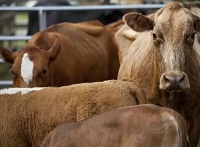
Biological treatment for cow disease
A University of Florida Institute of Food and Agricultural Sciences researcher and his colleagues are far more certain now that a new biological treatment could prevent dairy cattle from getting uterine diseases, which might improve food safety for people. That’s because Kwang Cheol “...Read more -

What does a healthy ageing cat look like?
The hair coat of older cats may take on a clumped and spiked appearance associated with a reduction in grooming activity. Just as improved diet and medical care have resulted in increased life expectancy in humans, advances in nutrition and veterinary care have increased the life span of...Read more -
Antihypertensive effect of fermented milk products under the microscope
Over the past decade, interest has been rising in fermented dairy foods that promote health and could potentially prevent diseases such as hypertension (high blood pressure). Functional dairy products that lower blood pressure and heart rate may offer consumers an effective alternative to antihyp...Read more -
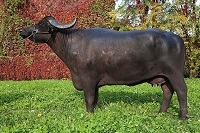
Water buffalo genome unveiled
This is “Olimpia da Farfengo” the female Mediterranean water buffalo that researchers sequenced. An international team of researchers led by the University of Adelaide has published the full genome of the water buffalo — opening the way for improved breeding and conservation of...Read more -

Sheep are able to recognize human faces from photographs
Sheep can be trained to recognise human faces from photographic portraits — and can even identify the picture of their handler without prior training — according to new research from scientists at the University of Cambridge. The study, published today in the journal Royal Society: O...Read more -

When horses are in trouble they ask humans for help
Horse making demands: The horse a) lightly pushes and b) looks at the caretaker standing outside the paddock. Food is hidden inside one of the two silver buckets behind them. When horses cannot obtain this food by themselves, t hey give humans visual and tactile signals. A new study has ...Read more -

Infectious prion structure shines light on mad cow disease
Groundbreaking research from the University of Alberta has identified the structure of the infectious prion protein, the cause of “mad cow disease” or BSE, chronic wasting disease in deer and elk and Creutzfeldt-Jakob disease in humans, which has long remained a mystery. The infectiou...Read more -
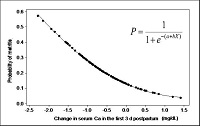
Risk Factors for Uterine Disease in Dairy Cows
Uterine diseases are highly prevalent in high-producing dairy cows. Metritis affects about 20% of lactating dairy cows, with the incidence ranging from 8% to >40% at some farms (Curtis et al. 1985; Galvão et al. 2009a; Goshen and Shpigel 2006; Hammon et al. 2006; Huzzey et al. 2007; Markusfeld...Read more

